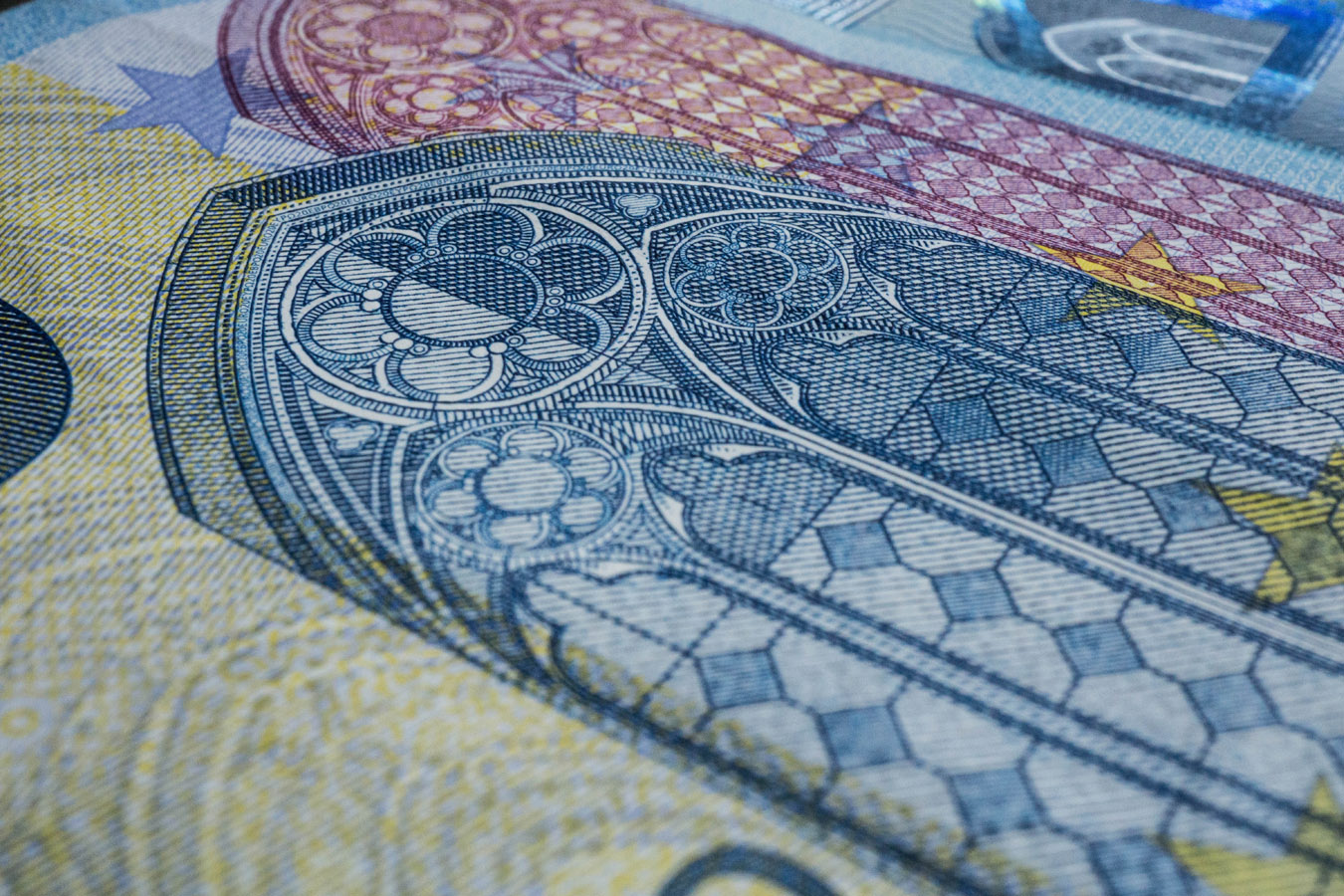
In collaboration with Chiemgauer-Stahlstich-Manufaktur
Die Stamping ...
… is a sophisticated, yet not widely used printing method categorized as intaglio printing. In the die-stamping press, a machine-etched or hand-engraved stamp (the die) is inked with a roller that applies the colour. It glides across wiping paper that is free of sand and knots. This method wipes the excess ink off the die and the only remaining ink is within the recessed areas intended for printing. Subsequently, the printing material is pressed into the die applying maximum pressure to transfer the ink to the paper in a relief-like manner. The result of die stamping is also easily visible on the back of the printing material, which differentiates “genuine die stamping” from an industrially produced relief print. If it is not desirable to see the die-stamping print on the back, for example for two-sided business cards, two previously printed papers are joined as the back and the front page (duplexing).
Best possible uses of die stamping?
Die stamping is particularly suited to the production of high-quality stationery for private individuals and businesses, and to make invitations or business cards. It is also forgery-proof and therefore suitable for certificates and security papers.
What is special about die stamping?
The high level of detail rendering makes die stamping the ideal choice for very fine lines, for example for the fading thin lines of curved script. The relief-like feel is fantastic and the clear line definition produces a greater sense of value than relief printing. Even on very thin paper, die stamping creates a great finish & feel. In contrast to other forms of printing, a hand-engraved die reveals the individual “signature” of the engraver.
What are the advantages and the disadvantages of this technique?
Die stamping achieves an exact reproduction of details and generates a highly valuable print object. The print product is very long-lasting and therefore well suited to archival pieces. Compared to conventional printing methods such as digital or offset printing, die stamping has a longer production time. First, the engraver engraves the stamp (the die) exactly as instructed. The period from the permission to print to the final product is around ten days. The respective initial costs for producing the stamp do not apply to follow-up orders.
Why is die stamping so popular at the moment?
Nowadays, our clients attach great value to standing out from the crowd with their printed products. In this context, the many steps in the manufacturing process as well as individuality play a particularly important role.
How does the technique work?
Two handmade formes are necessary for die stamping: A negatively engraved die and a counter die with raised areas to apply counter pressure. The printer cuts this counter die for every reprint. The die is clamped into a die-stamping press and is then inked. The ink only remains in the recesses. The paper is now pressed into the die with great pressure, absorbs ink and changes its form. This leads to the slight visibility of the printed image on the back page. Once the stamping press is set up and the image is aligned on the paper, the print run can start. Each sheet of paper is inserted and removed by hand and subsequently spread out to dry in a dedicated area. Envelopes are opened before the print run and closed afterwards to “hide” the traces of the die on the inside, rendering them invisible.
The reproduction of very subtle details is one of the great strengths of die stamping so lines should not be too wide. For large-scale printed images with line widths starting from one centimetre die stamping starts to reach its limits. As an alternative we would recommend hot foil stamping for jobs such as this. Die Stamping can also produce very beautiful visual and tactile finishedand effects.
Die-stamping can be realised in all colours. Across the globe, however, only two manufacturers of die-stamping colours remain in operation – one in Europe and one in the USA. Metallic colours like gold and silver can also be reproduced with incredible brilliance.
Die stamping is suitable for print runs with a minimum of 50 copies. Obviously, one-off costs for the die are higher for smaller print runs.
All uncoated and premium papers in a format up to 50 x 35 cm are suitable for die stamping. It is advisable not to exceed an image size of 17 x 20 cm as this would require two print runs.
How did die stamping evolve?
Die stamping evolved from copperplate printing which was used as early as the 15th century to produce playing cards. In the first half of the 19th century the American Jacob Perkins (1766-1849), who had settled in England, discovered how engravings could be realized on steel plates. From then onwards it has been possible to use these durable printing techniques for larger print runs. This is how die stamping spread across Germany, Italy, France and England into the entire world.
How do you see the future of this method?
Over the next few years I still see great growth potential in Germany and the whole of Europe. Other high-quality printing techniques, such as letterpress printing or hot foil stamping, are currently experiencing a renaissance. Developments in the United States and the UK fill me with great optimism in this context.